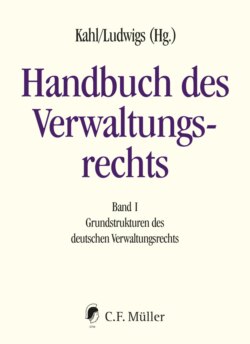| 1. | This chapter deals with the development of German administrative law from the beginning of the Allied occupation of Germany until German Reunification. It focuses on how the (West) German constitution, the German Basic Law adopted on 23 May 1949, impacted this development. Because the German Basic Law became the Constitution for Germany as a whole on 3 October 1990, it may be argued that the narrative of modern German law is the narrative of German law under the German Basic Law of 23 May 1949 (par. 9 et seqq.). |
| 2. | The Western Allied occupying powers proceeded from the principle that the basis for administrative action in the newly founded states should be the administrative legal system of the German Reich before 1945, stripped of its National Socialist legal elements (par. 1 et seq.). Similarly, Art. 123 (1) of the German Basic Law provides that “Law in force before the Bundestag first convenes shall remain in force insofar as it does not conflict with this German Basic Law” (par. 11 et seqq.). This allowed for a return to the German administrative law tradition prior to 1933, which thus forms the “legal heritage” of the Federal Republic of Germany. This “legal heritage” consisted not only of the “black letter law” but also implied the continuation of German legalistic administrative culture and German administrative legal thinking. Both were supported by maintaining numerous administrative structures and employing many civil servants who had already been in civil service before 1945 (par. 5 et seqq., 12 et seqq.). |
| 3. | As a reaction to the atrocities of the Nazi regime (and to the developments in the Soviet Occupation Zone), the German Basic Law emphasises the binding force of fundamental rights on all state bodies (see Art. 1 (3) German Basic Law) as well as the binding force of constitutional order, law, and justice (Art. 20 (3) German Basic Law). Since 1949, it has been considered the most prominent task of administrative law and administrative justice to protect the citizen from the arbitrary (ab)use of governmental power (par. 13 et seqq.). To guarantee the enforceability of these obligations, Art. 19 (4) German Basic Law provides a right to access the court in all cases where a “public authority” has violated individual rights. The new Federal Administrative Court thus “redefined” the laws and legal institutions taken over from the German Reich in light of fundamental rights. All this greatly strengthened the legal position of the individual vis-à-vis the administration and so brought about a general “legalisation” of administrative action, thus fortifying the already strong German legalistic approach to administration even further (par. 15 et seqq.). |
| 4. | The significance of the German Basic Law for the development of administrative law after 1949 is not limited to the role of fundamental rights and the protection of individual rights, however. Rather, other provisions of the German Basic Law have also channeled and shaped the development of administrative law in other ways. This chapter elaborates on this point regarding the often unconscious but far-reaching consequences of the use of the term “public authority” in Art. 19 (4) German Basic Law, (par. 18 et seqq.) and the division between “legal protection” by the administrative courts and state liability, which can only be claimed before the ordinary courts (Art. 34 German Basic Law, par. 25 et seqq.). It also considers the constitutionally guaranteed existence of five types of courts, namely ordinary courts, labour courts, administrative courts, finance courts, and social courts (Art. 95 German Basic Law), which led scholarship to focus on the jurisdiction of the administrative courts (par. 27 et seqq.). Ultimately, federal courts’ jurisdiction in disputes requiring the application of the law of the federal states, led to a certain “uniformisation” of the law of the federal states (par. 32 et seqq.). |
| 5. | The development of administrative law in the “old” (Western) Federal Republic of Germany (“Bonn Republic”) was characterised first by a very creative phase (1949 to 1960), in which the courts and legal scholarship together established new general principles of administrative law deriving from fundamental rights and constitutional principles (par. 36). These rules were then progressively codified in the Code of Administrative Court Procedure (Verwaltungsgerichtsordnung – VwGO) of 1960 (par. 36), the Administrative Procedure Act (Verwaltungsverfahrensgesetz – VwVfG) of 1976 (par. 40 et seqq.), and the State Liability Act of 1981 (which was very influential even though it has been declared unconstitutional, par. 42). Furthermore, urban planning law (since 1960, par. 38, 47) and environmental law (since the 1970s, par. 43 et seqq.) were “modernised” and codified. In the 1980s, codification greatly consolidated the administrative law of West Germany, thus also leading to its “ossification” (par. 47). |
| 6. | Until the end of the 1980s, German scholarship hardly saw or anticipated the far-reaching effects which the law of the European Communities would have on the core elements of German administrative law. A real discussion about the consequences of European integration for national administrations and national administrative law only began (at least in Germany) after 1990 (par. 48). |
